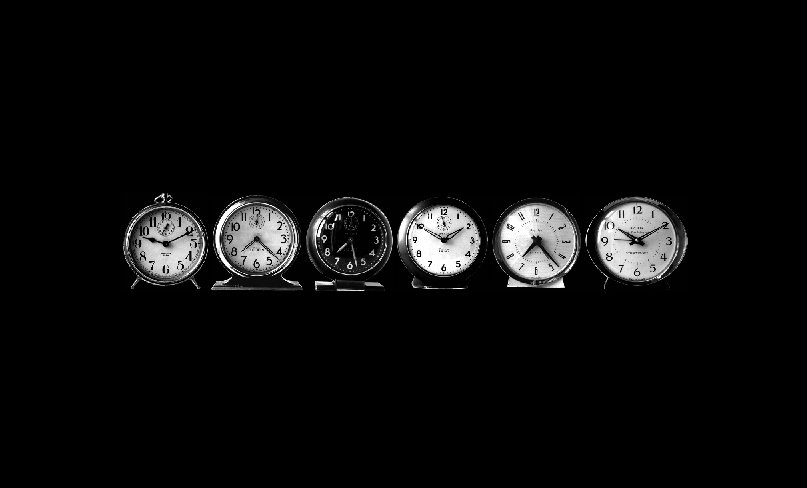Clock Box, 1999
 Clock Box Big Bens
Clock Box Big Bens

- Clock Box installation
Clock Box was an installation of wind-up alarm clocks. In the 4′ x 14′ space of terminal, I arranged 81 of my favourite alarms in a single, continuous row along the wall. With the space entirely painted in matte black, one was left with only the dimly lit clocks and their ticking. I’ll admit to being surprised by the overwhelmingly response to the installation. It is similar to some of my other work in that there is a modernist repetition of a single similar element, so I had expected, perhaps, a like reading. I had not anticipated that these clocks and the bewildering sound they created would have such an emotive effect.
Time Piece Exorcises Millennial Angst
terminal gallery
Ottawa (December 8, 1999)-Clocks, alarm clocks, lots of them ticking, ticking and ticking away in a blackened space. The installation, Clock Box, is a contemplation on the nature of time at the end of a century and a millennium. It’s also an attempt to exorcise millennial angst by artist Adrian Göllner.
The work continues Göllner’s exploration of Cold War fears that stemmed from his childhood. “As a child growing up in Germany, I knew of World Wars I and II and thought that World War III was simply a matter of time and that it would be very final. It seemed impossible to me that we would make it to the year 2000, which was so far away. I used to imagine the year 2000 as one big mushroom cloud,” says Göllner. He views Clock Box and an earlier piece, Cold War Cards, as way of finally ridding himself of the ghost of his childhood Cold War fears.
The installation consists of Göllner’s personal collection over 140 alarm clocks arranged in the unique confines of the terminal gallery space. The clocks date from the turn of the century to present day and range in style from the basic working man’s alarm clocks, to very feminine women’s vanity clocks, to cheap, modern versions designed to be thrown away.
“The steady tick, tick, tick of the wind-up alarm clock already belongs to the past, but it was these clocks that set the cadence for this century – get the workers to the factory on time and ensure consumers knew when to tune into their favourite soaps. This installation is very much the clocks’ collective swan song. At this rare marker in time, their unique properties offer the viewer many ways to become conscious of time and its passing,” says Göllner.
December 16-18, 1999
terminal, Arts Court, Ottawa